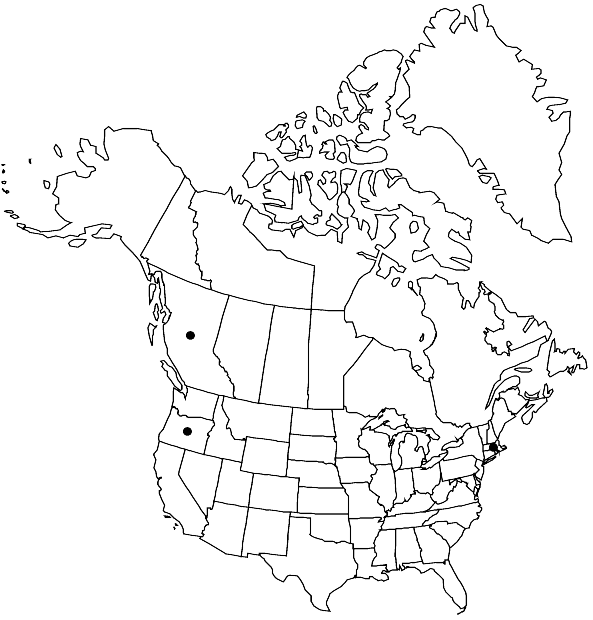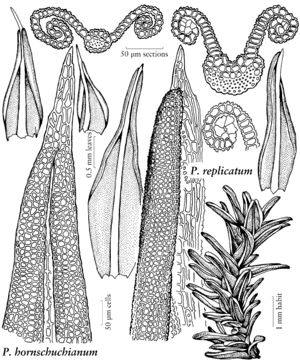Pseudocrossidium hornschuchianum
Phytologia 44: 205. 1979,.
Stems to 0.5 cm. Stem leaves ovate-deltoid to short-lanceolate, 1–1.5 mm, distal margins once- to almost twice-revolute; apex narrowly acute below the awn; costa ending in the long mucro or short awn, adaxial surface of costa at mid leaf convex, with 2–3 guide cells; distal laminal cells 10–13 µm wide, 1:1. Specialized asexual reproduction absent. Perichaetial leaves strongly differentiated. Seta ca. 1 cm. Capsule ca. 1.7 mm, peristome of 32 linear, yellow teeth, twisted counterclockwise a half turn, operculum conic. Spores yellow, essentially smooth, 8–10 µm.
Habitat: Thin soil, lawns, limestone, bluff overlook, gardens, rock outcrop, ridge top
Elevation: low to moderate elevations (20-700 m)
Distribution

B.C., Mass., Oreg., Eurasia, Africa, Australia.
Discussion
Pseudocrossidium hornschuchianum was first reported for North America from British Columbia by B. C. Tan et al. (1981), then from Massachusetts by B. D. Mishler and N. G. Miller (1983), apparently associated with ornamental cultivation. The Oregon station (Jackson County, Ferris Gulch, D. H. Wagner 9183, MO) is apparently, however, in a natural setting on a ridge top. This species differs from P. obtusulum by the narrowly acute apex with a long apiculus or short awn, and the strongly differentiated perichaetial leaves. Both perigoniate and archegoniate plants are present in the West (British Columbia), though at different sites, and the Oregon specimen was fruiting, while only perichaetiate plants are found in the East (Massachusetts).
Selected References
None.
